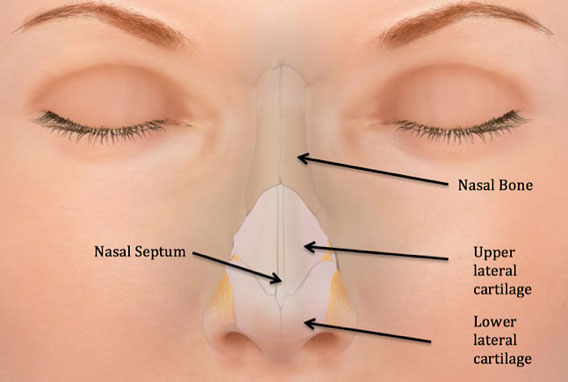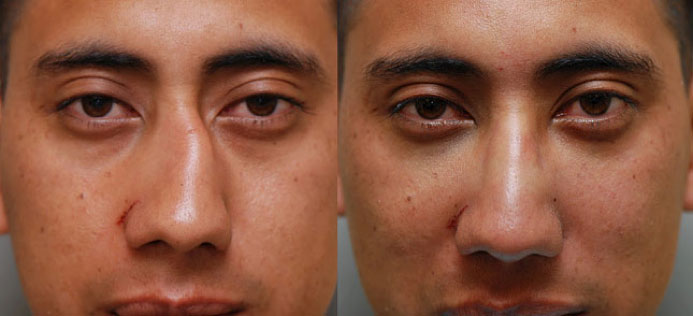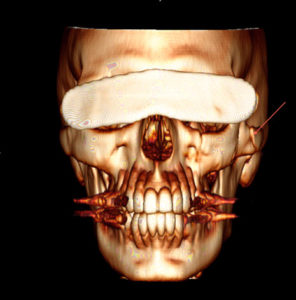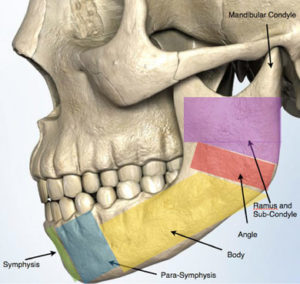
- Chin Implants on the Rise - September 25, 2017
- Nasal Fractures - September 25, 2017
- Hereditary Hemorrhagic Telangiectasia - May 25, 2016
- Hereditary Hemorrhagic Telangiectasia: Septal Perforation and Nose Bleeds - May 23, 2016
- Hereditary Hemorrhagic Telangiectasia: Epistaxis and Septal Perforation - May 18, 2016
- Wegener’s Granulomatosis: Autoimmune Disease and Multi-Focal Septal Perforation - May 9, 2016
- Kyle Korver: Facial Injury and Nasal Fracture - March 24, 2015
- Russell Westbrook: Facial Injury and Surgery - March 5, 2015
- Mega-perforation: Pushing the Limits of Septal Perforation Repair - November 26, 2014
- Septoplasty Complication and Septal Perforation - November 24, 2014
- Nose Picking (Rhinotillexis) and Septal Perforations: Why I should stop picking my nose…? - November 24, 2014
- Nasal Fractures, Septal Hematoma, and Septal Perforation: Simultaneous Rhinoplasty and Septal Perforation Repair - October 1, 2014
What is a nasal fracture?
A nasal fracture or broken nose is caused by blunt trauma to the nose. There are many types of nasal fractures that are differentiated by how your nose is broken. They can be differentiated by the site of impact, the amount of force used, and the bones that were affected.

When should you see a doctor?
If you’ve experienced recent trauma to the nose, its crucial to see a physician to check for a septal hematoma. A septal hematoma is a severe nasal obstruction caused by swelling of clotted blood in tissues under the septal mucosa. If a septal hematoma is present, it must be treated promptly by draining it to prevent more problems from developing in the nose. Some of these problems include the collapse of the nasal septum and spread of bacteria from the septal hematoma to the brain. If you suspect your nose may be broken, see an otolaryngologist (head and neck surgeon) within one week of your injury. If you are seen within one to two weeks, it may be possible to repair your nose immediately without the need for surgery. If you wait longer than two weeks (one week for children) you nose will begin to heal and you will likely need to wait several months before your nose can be surgically straightened. If left untreated, a broken nose can lead to facial deformity and difficulties breathing.
Do you have a nasal fracture?
During your examination, the doctor will ask you to explain how the fracture occurred, the state of your general health, and how your nose looked before the injury. The doctor will examine not only your nose, but also the surrounding areas including your eyes, jaw, and teeth. The doctor will also look for bruising, lacerations, and swelling.
For a more accurate diagnosis, your physician may recommend a computed tomography (CT) scan. These scans can help the physician clearly see the nasal bone fractures and any other nasal anomalies resulting from your injury.

Treatment Options
If your nose is broken but no bones are out of position, you may not need any treatment other than RICE (rest, ice, compression, and elevation).
If your nasal bones are fractured and need to be repositioned, you have several options. You might be able to have your nose repaired at the office through a procedure called closed nasal reduction. In this procedure, your doctor can administer local anesthesia, reposition the broken bones into place, and then hold them in the right location with a cast made of plastic, plaster, or metal. This cast will then stay in place for about a week. If the trauma is too severe for a closed nasal reduction, the doctor may advise putting you under general anesthesia and operating in the OR.
Surgery
If more than two weeks have passed since the time of your injury, you will need to wait a couple of months for your nose to heal completely before having it straightened surgically. After this waiting period, the swelling will have reduced and the doctor will be able to have a better understanding of how your nose originally looked. This type of surgery is considered reconstructive plastic surgery, as its goal is to restore your appearance to the way it was prior to injury. If your repair is done within two weeks of the injury, restoring prior appearance is the only possible goal. If you have waited several months for the repair, it is often possible to change the appearance of your nose as you desire, as well as fix the fracture.
To learn more about facial plastic surgery, please visit: www.ohni.org.



